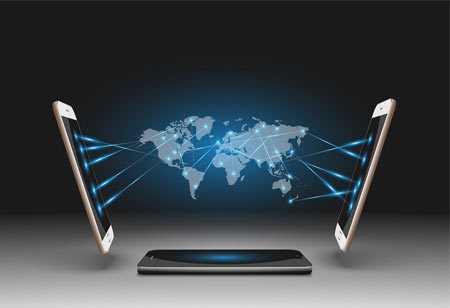THANK YOU FOR SUBSCRIBING
Five Wireless Technology Trends
In larger facilities such as ports, airports, and factories, 5G Cellular has served as a supplement to Wi-Fi technology as a more cost-effective and high-speed data networking solution

By
Apac CIOOutlook | Friday, September 03, 2021
Stay ahead of the industry with exclusive feature stories on the top companies, expert insights and the latest news delivered straight to your inbox. Subscribe today.
In larger facilities such as ports, airports, and factories, 5G Cellular has served as a supplement to Wi-Fi technology as a more cost-effective and high-speed data networking solution.
Fremont, CA: Over the years, wireless technology has advanced dramatically. New and developing technologies such as robots, drones, self-driving vehicles, and new medical devices are emerging, necessitating the development of the Internet of Things (IoT), which will be the cornerstone for these technologies' development. Here are five wireless technology trends:
5G
In larger facilities such as ports, airports, and factories, 5G Cellular has served as a supplement to Wi-Fi technology as a more cost-effective and high-speed data networking solution. However, 5G is still in its early stages of development, with complete deployment expected to take five to eight years. For now, most providers are focusing on offering 5G as high-speed internet alone, but 5G will eventually boost Internet of Things (IoT) and low-latency applications.
Long-range wireless power
The distance constraints for wireless devices are still marginally better than cable connectivity. However, emerging technologies can charge devices at ranges of up to one meter or over a table or desk area. As a result, long-range wireless would eventually replace power connections in computers, display monitors, kitchen appliances, and household utility systems like vacuum cleaners.
Wireless sensing
Sensing is used to detecting the absorption and reflection of wireless signals. Indoor radar systems for robots and drones can benefit from this sensor technology. When numerous individuals are talking in the same room, virtual assistants can utilize radar tracking technology to increase their effectiveness. Sensor data is used in various applications, including medical diagnostics, object recognition, and smart home interactions.
Backscatter networking
Backscatter networking allows data to be transmitted at very low power consumption. This is perfect for small networking devices, and it's especially critical in situations where wireless signals are already saturated, and simple IoT devices like sensors and trackers are needed in small businesses and smart homes.
Software-defined radio (SDR)
With SDR technology, the majority of signal processing in radio systems would transfer from hardware to software. Radio can now accommodate a broader range of frequencies and protocols thanks to SDR technology. This technology isn't new; it's been there for a while, but it's never caught on since it's more expensive than using chips. Legacy protocols will be supported by SDR, and software upgrades will enable new protocols.
See Also: Top Core Banking Solution Companies





